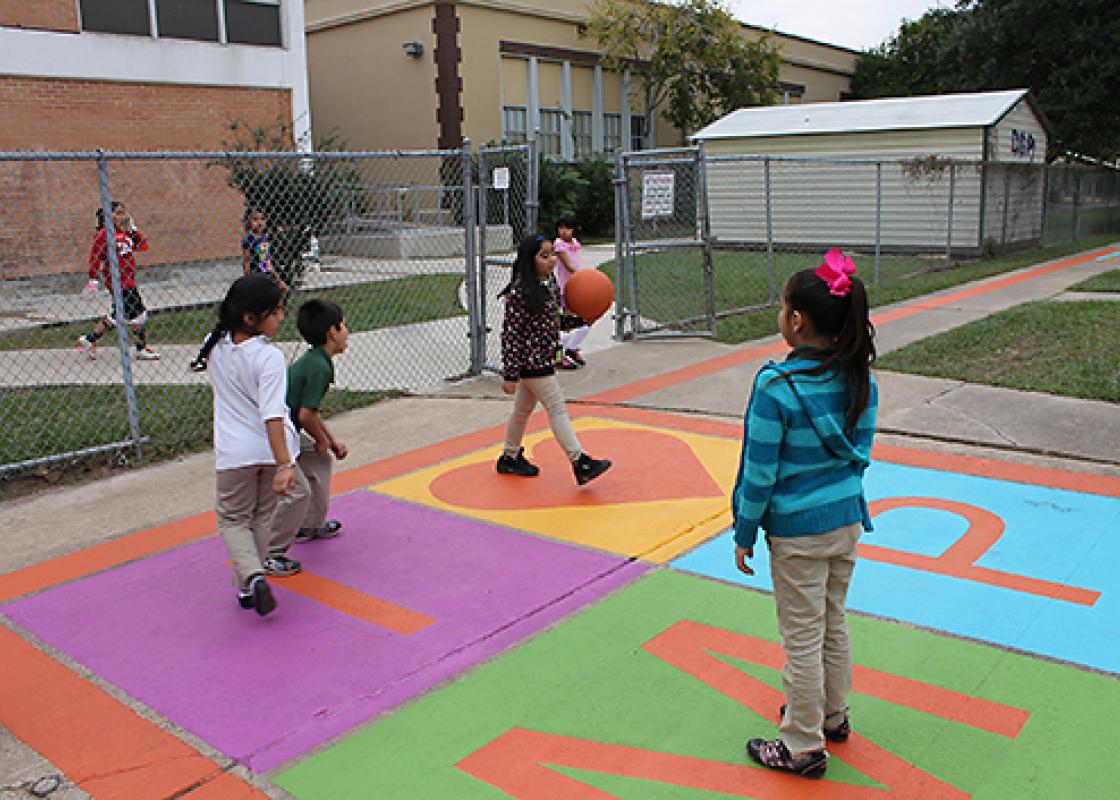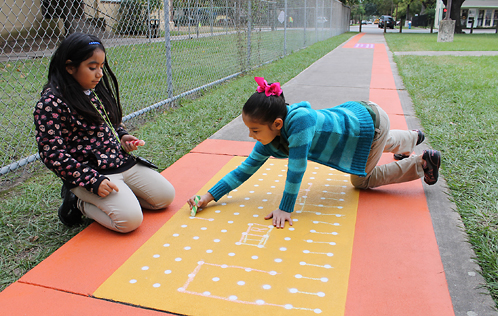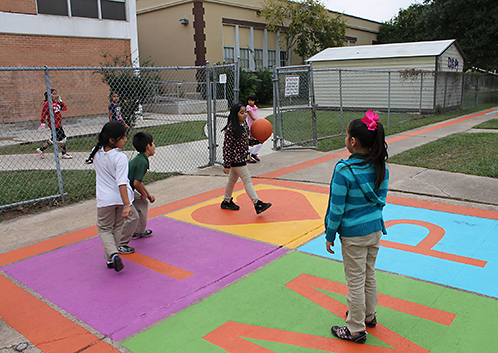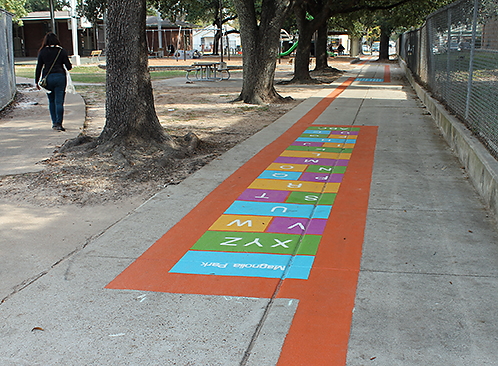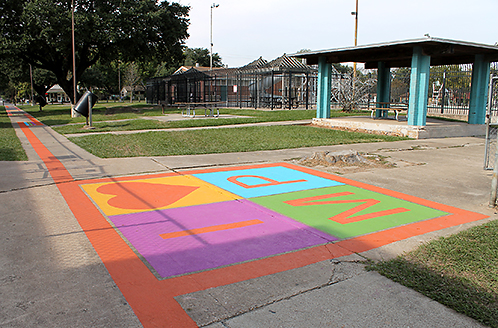DeZavala Elementary School students connect the dots. Photo: CDRC.
Paint. Some masking tape. That's it. That's all it took to brighten a sidewalk at De Zavala Elementary School in Magnolia Park --- and help to brighten the entire neighborhood a bit. Directed by Susan Rogers, who also serves as chair of the Cite editorial committee, students in the Community Design Resource Center (CDRC) at the University of Houston Gerald D. Hines School of Architecture partnered with community leaders to conceive of and complete the 600-foot-long Zona de Juego (Play Zone). Where there had been dull, anonymous concrete, there's now color and personality. A means of conveyance, a means of play. A sidewalk, a journey, one punctuated with diverting graphics and activities, as in a video game.
Little things like these can create big effects. They emphasize interaction, imagination. Students --- and their family members, too --- can play hopscotch or tic-tac-toe or four-square, draw or doodle with chalk. (They could even diagram the sentences that tell the story of this predominantly Mexican-American neighborhood near Navigation Boulevard and the Ship Channel.) A little part of the built environment that almost everyone had been overlooking is now something almost no one can miss.
This kind of a gesture has a fairly rich architectural pedigree. In the '60s and '70s, impulses toward urban renewal combined thrift and resourcefulness to take the form of so-called Supergraphics: Murals painted on community centers and schools, new coats of paint sprucing up aging commercial buildings, eye-popping public art. Former UH architecture professor John Zemanek went with a group of students in the '70s to Pearl Harbor in the Fifth Ward to partner with community leaders to paint Project HOPE. (You can read more about that, and other counterculture acts at UH, in Bruce Webb's essay in Cite 82.)
It's a gesture that has a rich pedigree in Houston's East End. There are 17 murals mapped by the Greater East End Management District --- including the decaying Rebirth of Our Nationality painted by Leo Tanguma in 1973 on the Crown, Cork & Seal building on Canal Street --- and dozens of others made by students, commissioned artists, church groups, even civic-minded amateurs. Restaurants here are often illustrated with little drawings of the dishes served inside; body shops flag you down with rasquache statues of muffler men.
Supergraphic at Zona de Juego. Photo: CDRC.
The Zona de Juego is not so ambitious or serious as "Rebirth of Our Nationality," of course, but it exists within a similar context. And it certainly keeps with the CDRC's community-focused DIY ethos. Last spring, for example, Rogers asked her students to "improve a space" in southeast Houston near Almeda Mall. The catch? They were allowed a budget of $75. They responded by incorporating the visual arts into the built environment: Some students painted a linear history of autism on the asphalt, leading to an arrow that urged "DO SOMETHING;" others installed data-driven signage about Houston's housing problem.
That project, like this one, asks an important question: What can we do, when we don't have a developer's bottomless budget or a contractor's inventory, that might improve the lives of those who use the space? Who go to school here, or play with their kids here, or gather at the end of the day to push strollers or exercise or buy a Popsicle or find some privacy to call a loved one?
"Paint is not a panacea," cautions C. Ray Smith in a seminal 1970 Progressive Architecture article on supergraphics. "[But] there is a valid place for surface renewal as well as fundamental renewal." Smith quotes Cesar Pelli: "Colors in themselves can become architecture. It is one more tool. It is not the answer to everything but in many cases it is the best answer."
More >>>
Read the CDRC blog post, "$75 + Vision."
Read Raj Mankad on Thick Infrastructure, another CDRC project.


